The list of Asia's 50 Best Restaurants 2020 was revealed on Tuesday 24h March at our first ever virtual announcement. Including seven new entries and one re-entry, and taking in restaurants across 10 countries, the eighth edition of the list aims to support restaurants all over the continent in their recovery from the impact of the Covid-19 pandemic and recognise their achievements over the last 12 months.
Explore the restaurants voted into the ranking in 50 photos, read their descriptions and click on each restaurant's name to read the full profile on the Asia's 50 Best Restaurants website
No.50 Nouri, Singapore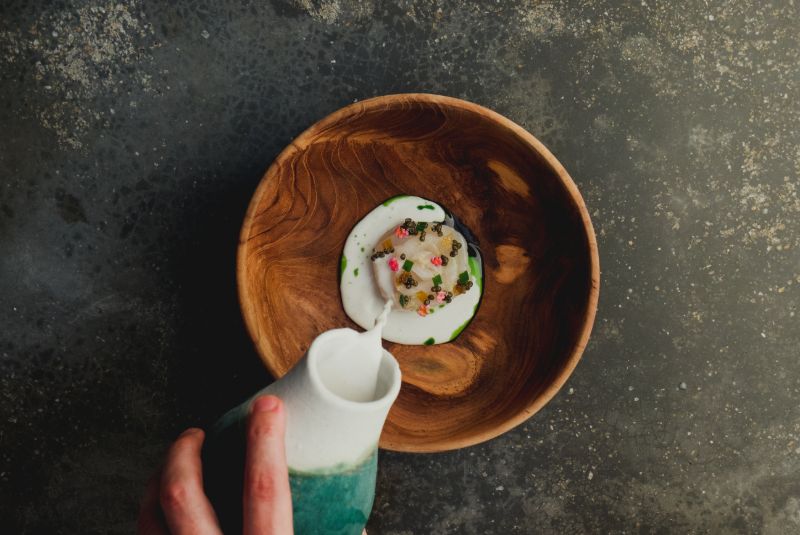
Chef Ivan Brehm creates what he calls 'crossroads cuisine' – an exploration of ingredients and cultures from different regions converging at the intersection that is Nouri. Expect to find dishes like an Afro-Brazilian fritter, a dish that will taste familiar to anyone who has lived in South-East Asia because it shares many common regional aromatics like turmeric, lemongrass and coconut milk. Whichever cuisine Chef Brehm chooses to channel through a particular dish, there’ll always be a resonating sense of familiarity within the unfamiliar.
NEW ENTRY
No.49 Inua, Tokyo, Japan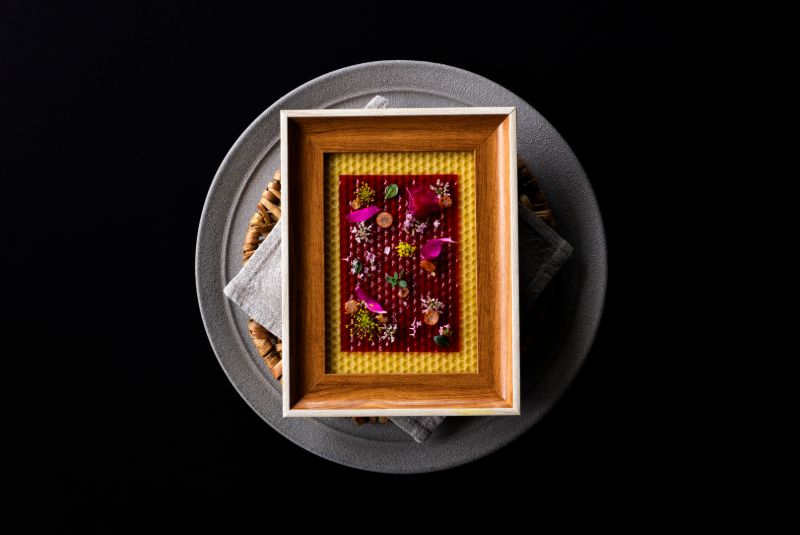
A stark contract to Tokyo’s many shoebox-sized dining rooms, the spacious, earthy-toned Inua – located nine floors up – channels a sleek, yet sparse Scandinavian aesthetic that feels at home amongst Japan’s minimalist ideals. An ingredient-driven, fermentation-rich tasting menu honours Japanese seasonality via plates like aged and smoked maitake braised in pine dashi with salted sakura; and seasonal citrus with fermented chili and roasted kelp oil.
No.48 L'Effervescence, Tokyo, Japan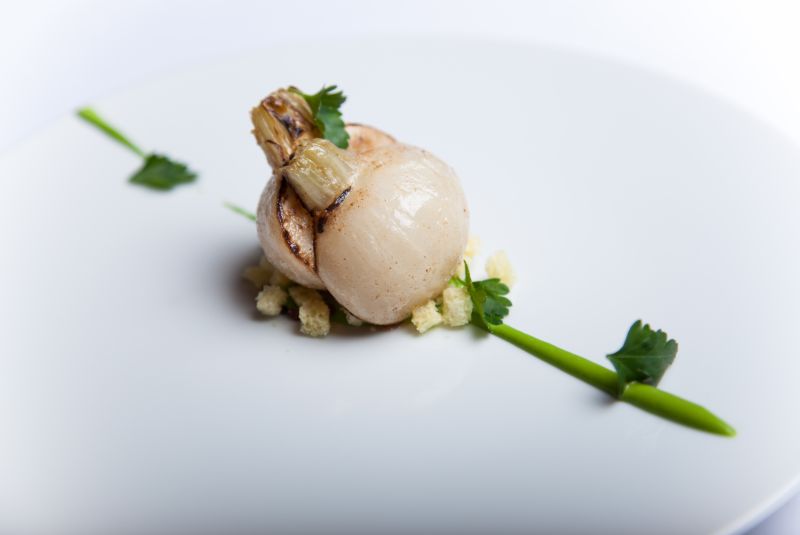
This sparkling restaurant is all about harmonious flavours, plated with philosophical thought. Off-the-plate offerings are equally exceptional, with stand-out service that amplifies the experience. L’Effervescence won the inaugural Sustainable Restaurant Award in 2018, highlighting the chef’s unparalleled commitment to freshness, nature, the environment and natural resources.
NEW ENTRY
No.47 80/20, Bangkok, Thailand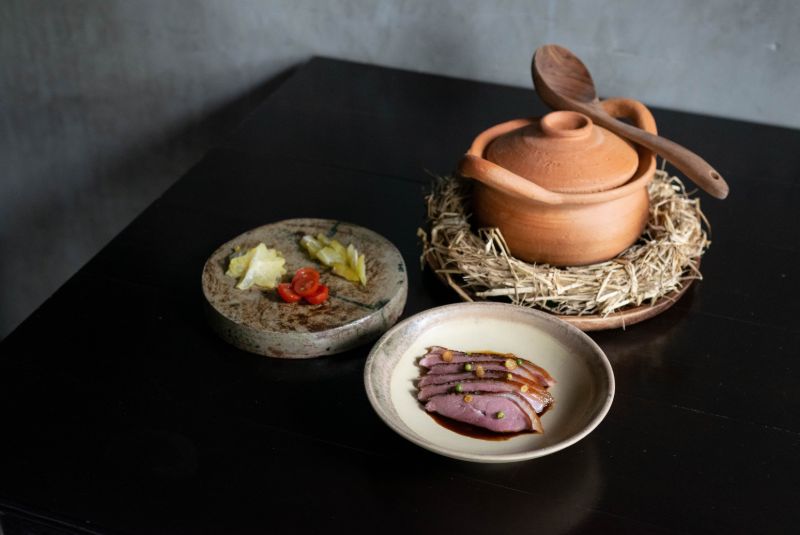
So named due to the ratio of Thai ingredients used compared to those sourced overseas, the 80/20 brings 100/100 in terms of big Thai flavour. A 2019 relaunch saw the restaurant return touting the use of 100% local produce, sourced from small-scale purveyors nationwide, although it has chosen to keep the original 80/20 moniker. It is now one of Bangkok’s most in-demand destinations.
No.46 Sushi Saito, Tokyo, Japan
A tiny, spartan dining room in Tokyo’s Ark Hills office complex is the unlikely setting for one of Japan's most venerated sushi restaurants. Chef Takashi Saito goes to extraordinary lengths to source the best ingredients to create sushi that balances texture, temperature and flavour.
RE-ENTRY
No.45 Bukhara, New Delhi, India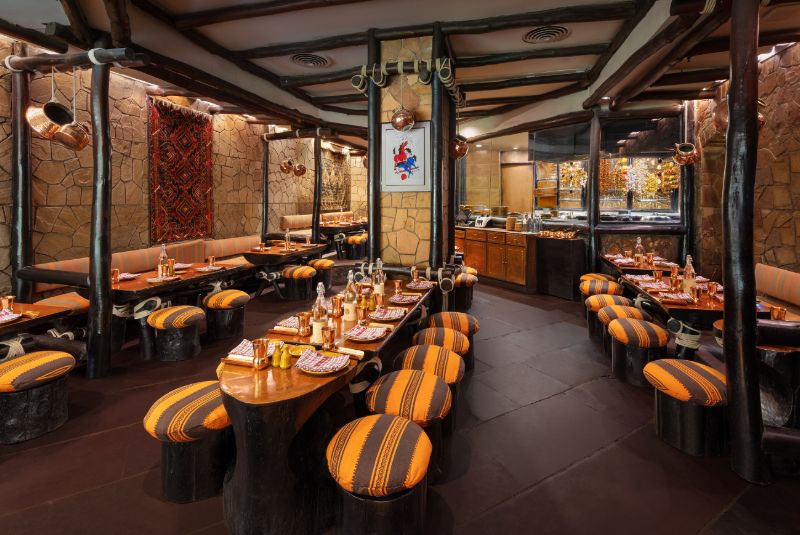
One of the most popular dining destinations in the Indian capital, Bukhara has attracted celebrities and heads of state from Roger Federer to Arnold Schwarzenegger over its 40-year lifespan. Tandoor-cooked meat and veg are the stars of the show at Bukhara, with popular dishes like such as murg tandoori, a whole chicken marinated in yoghurt and spices that customers are invited to tear apart with their hands.
No.44 Toyo Eatery, Manila, Philippines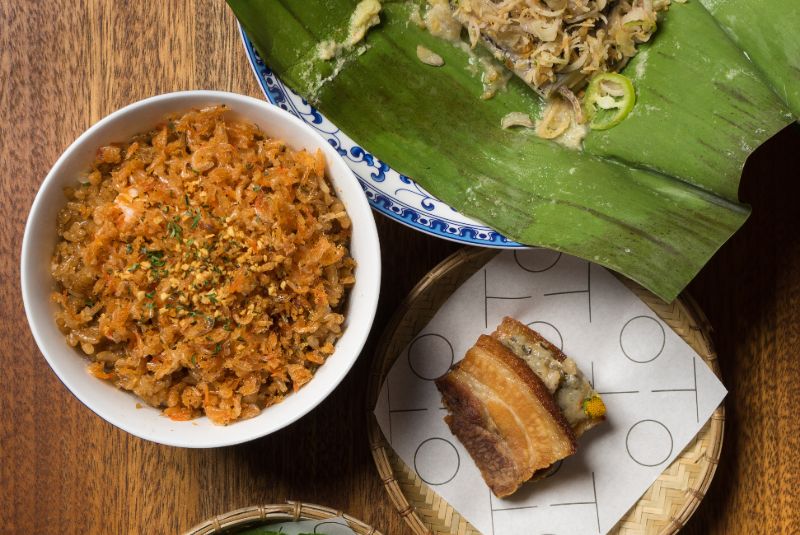
Opened in 2016, Toyo Eatery is founded on the philosophy of rediscovering national identity through the Philippines’ products, cuisine and culture. Often using traditional cooking methods, Navarra has created tasting menus ranging from three to 11 dishes, and the restaurant also offers à la carte options. Taking inspiration from various facets of Philippine culture, the Bahay Kubo is a play on a local kid’s song that enumerates 18 different vegetables — all of which are prepared and cooked in various ways, then assembled into one dish.
No.43 Shoun RyuGin, Taipei, Taiwan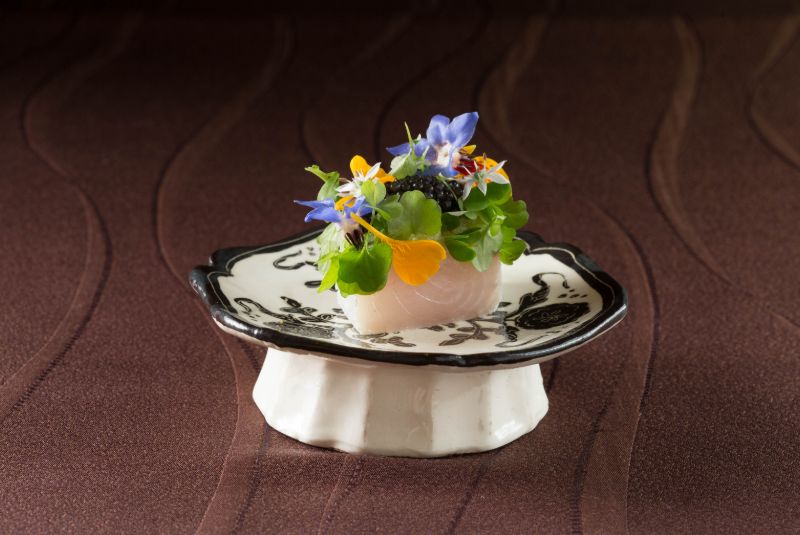
An offshoot of legendary Japanese chef Seiji Yamamoto’s flagship Nihonryori RyuGin, Shoun RyuGin specialises in kaiseki crafted not with Japanese but Taiwanese produce. Head chef Ryohei Hieda spent months combing the Taiwanese terroir before opening the restaurant. Today, apart from Japanese sauces, which he still brings in from Japan, he uses exclusively local ingredients, such as sweet ayu fish, amadai (tilefish), pigeon and vegetables.
No.42 Corner House, Singapore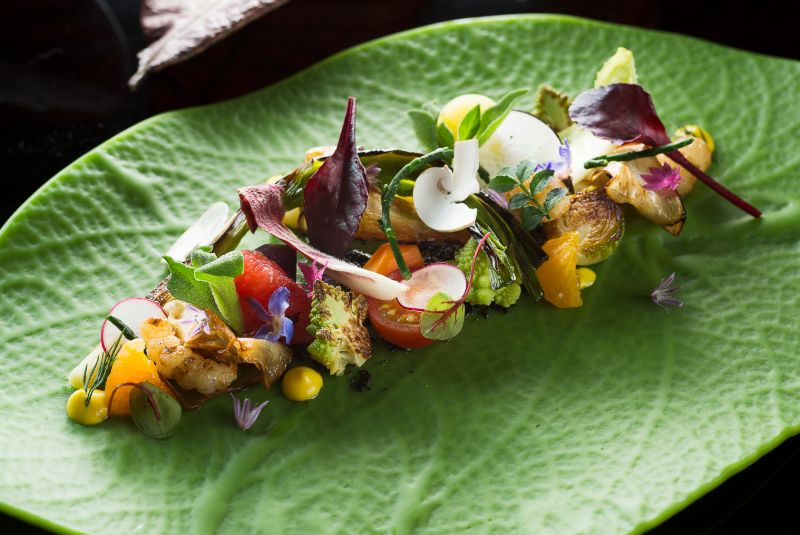
Corner House is named for E J Corner, who resided in the property for 13 years during his tenure as the Assistant Director of the Singapore Botanic Gardens. The whole menu is created around the concept of ‘gastro-botanica’ – a contemporary cuisine that puts equal focus on the proteins and the botanical elements on the plate.
No.41 Ultraviolet by Paul Pairet, Shanghai, China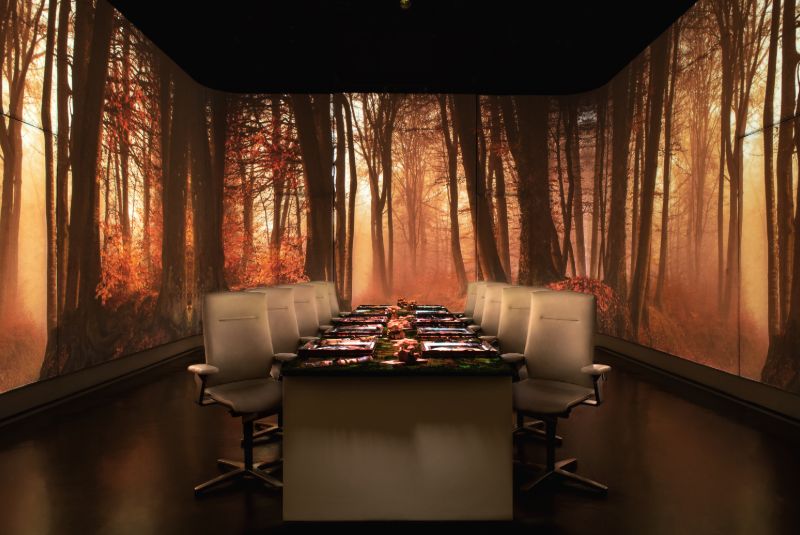
In a world packed with novel and surprising restaurant experiences, Ultraviolet by Paul Pairet is the original and by far the most unique. A meal here may be a thrilling show of lights, sounds and feasts for the senses but one thing remains true throughout – every bite tastes phenomenal.
No.40 La Maison de la Nature Goh, Fukuoka, Japan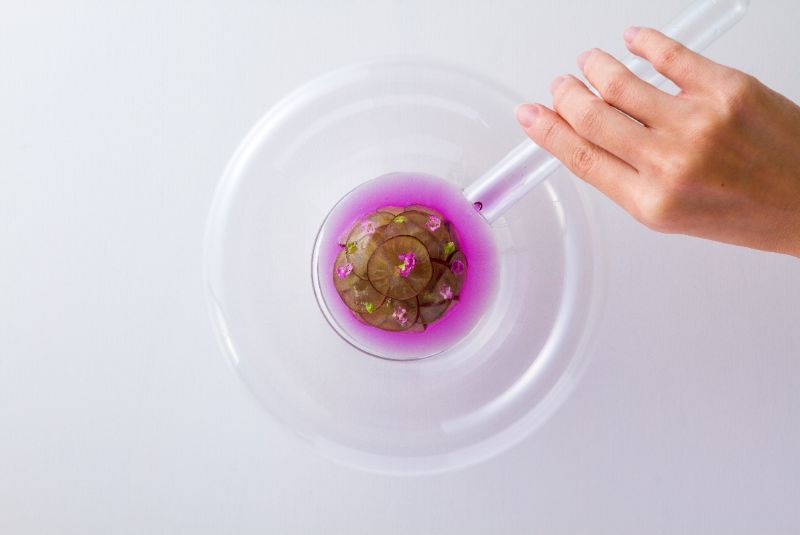
Hidden down a small alleyway off Fukuoka’s Nishinakasu street, La Maison de La Nature Goh is a quiet, stylish restaurant serving omakase (or ‘chef’s choice’) – a six or seven-course menu created by talented chef-owner Takeshi Fukuyama.
No.39 Bo.Lan, Bangkok, Thailand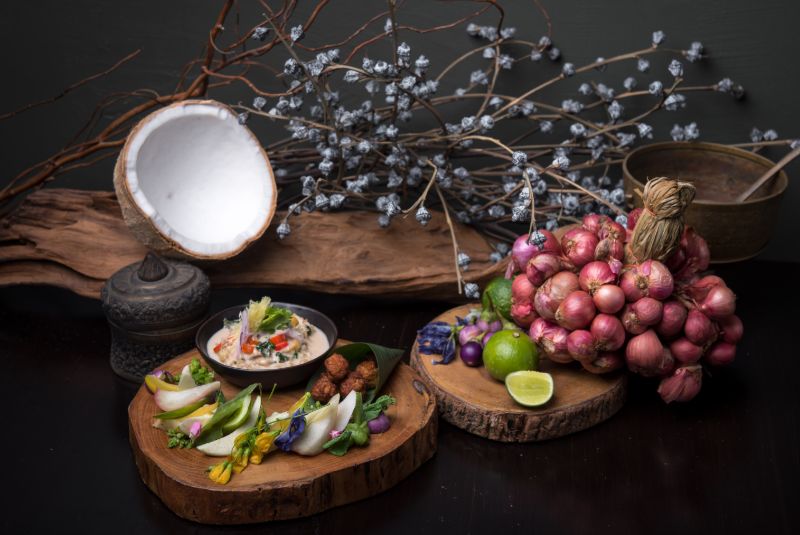
Bo.Lan’s authentic Thai cooking draws influence from the country’s fiery street food and home-cooking traditions as well as its more refined palace-style cuisine. Only the tastiest organic, locally sourced products are used.
No.38 Paste, Bangkok, Thailand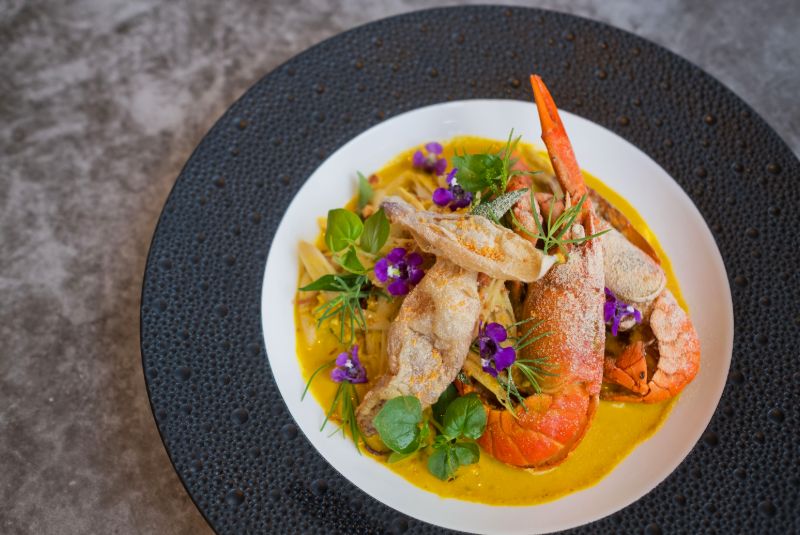
Paste is a study in Thai culinary history. Chef-owners Bongkoch ‘Bee’ Satongun and husband Jason Bailey have spent years painstakingly studying and chronicling the evolution of Thai cuisine, discovering century-old recipes and long-forgotten techniques in the process.
No.37 Locavore, Bali, Indonesia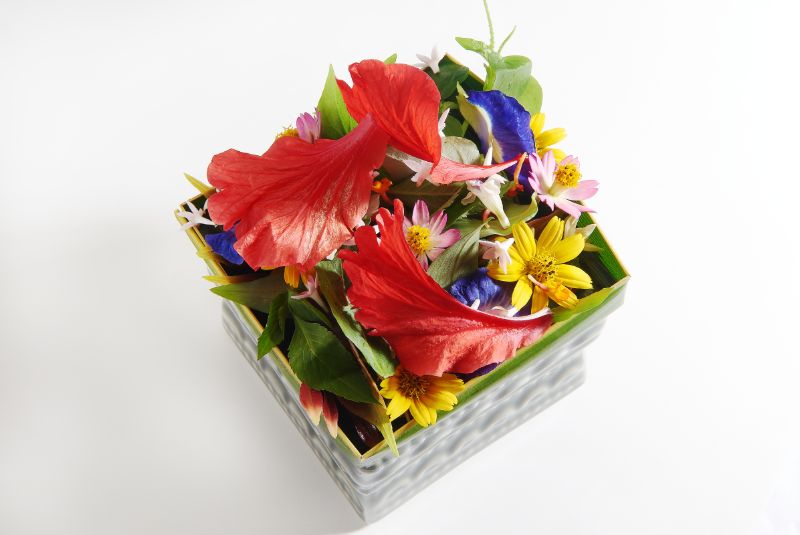
As the name would suggest, Locavore is all about local, from the raw Balinese abalone to the Sumbawa Island oyster, and even through to the plates, silverware and cocktail glasses, which are made in nearby workshops. Its commitment to sustainability is so strong that in 2019, Locavore won the Sustainable Restaurant Award.
No.36 Raw, Taipei, Taiwan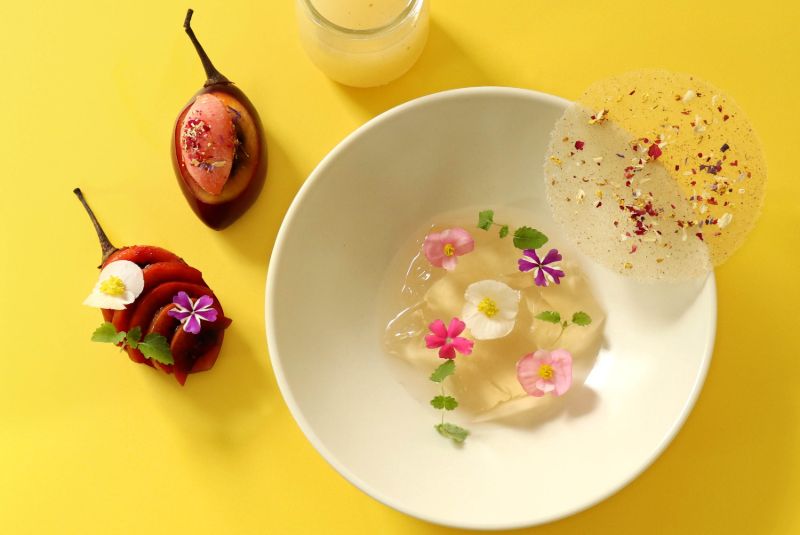
Chef André Chiang wowed diners for eight years at Restaurant André in Singapore before closing it in February 2018, so it was only a matter of time before he brought his talent back to his birth country, Taiwan. Since its opening in late 2014, Raw has become one of the hottest spots in Taipei, with striking interior design and an innovative menu.
NEW ENTRY
No.35 Ode, Tokyo, Japan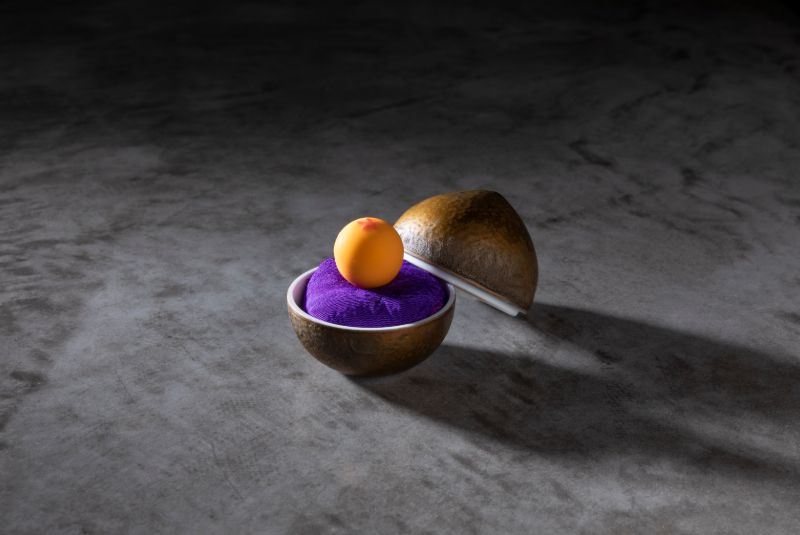
Chef Yusuke Namai opened Ode in September 2017. Chic but casual, Ode’s decor is a meditation on the colour grey, from the front door to the ceiling, walls and countertop that runs the length of Namai’s open kitchen. Namai brings a depth of visual artistry and playfulness to his cuisine, best expressed in his signature grey-on-grey Sardines with Anchovy Meringue. Other dishes reference pop culture influences from his youth.
NEW ENTRY
No.34 Hansikgonggan, Seoul, South Korea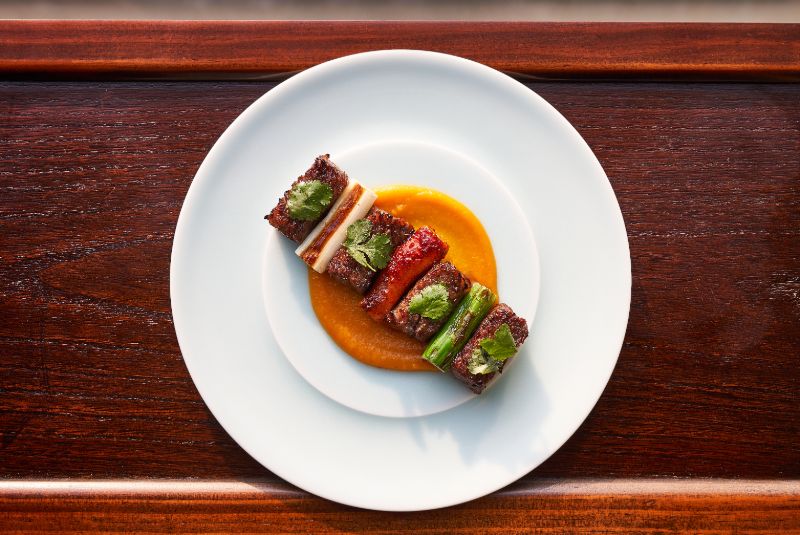
In an unpretentious, light-filled room with stunning views over the rooftops of Seoul, chef Cho Hee-sook serves creative dishes that epitomise Hansik (Korean) cuisine. Using seasonal ingredients and a variety of cooking techniques, the team creates dishes that preserve the original flavour of the product, as per Hansik technique, for a menu of intricate plates with maximum flavour.
No.33 Lung King Heen, Hong Kong, China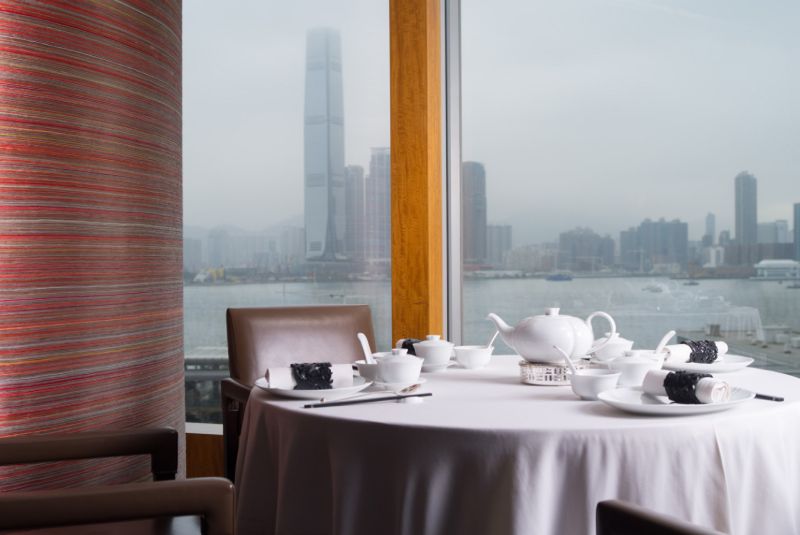
This restaurant in the Four Seasons Hotel was the first Chinese restaurant to be awarded three Michelin stars. Its runaway success was a result of its fresh look at local cuisine, combined with the jaw-slackening views of Victoria Harbour.
No.32 8 ½ Otto e Mezzo Bombana, Hong Kong, China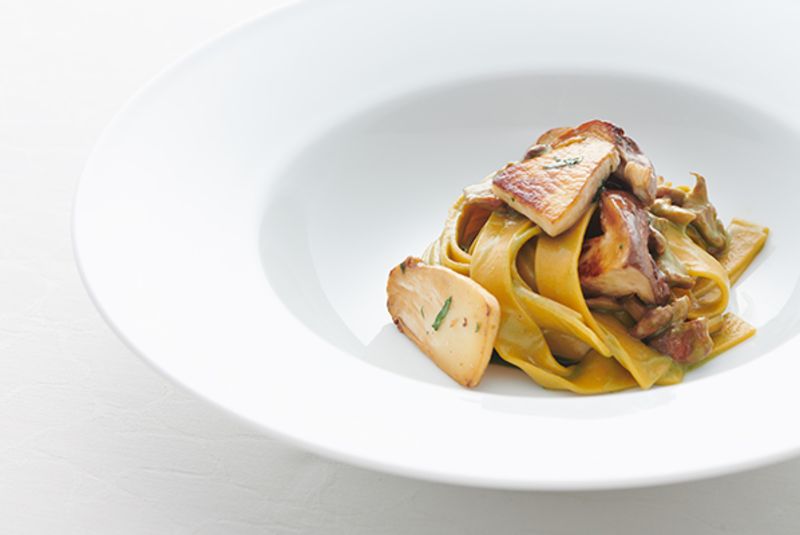
Award-winning chef Umberto Bombana opened 8½ Otto e Mezzo Bombana after the closure in 2008 of Toscana and The Ritz Carlton Hong Kong, where he had worked since 1993. The restaurant was awarded two Michelin stars after just 11 months of opening, and quickly achieved further critical acclaim. But its appeal goes beyond its outstanding Italian food, and in 2019 8 ½ Otto e Mezzo Bombana was also recognised with the Art of Hospitality Award.
No.31 Amber, Hong Kong, China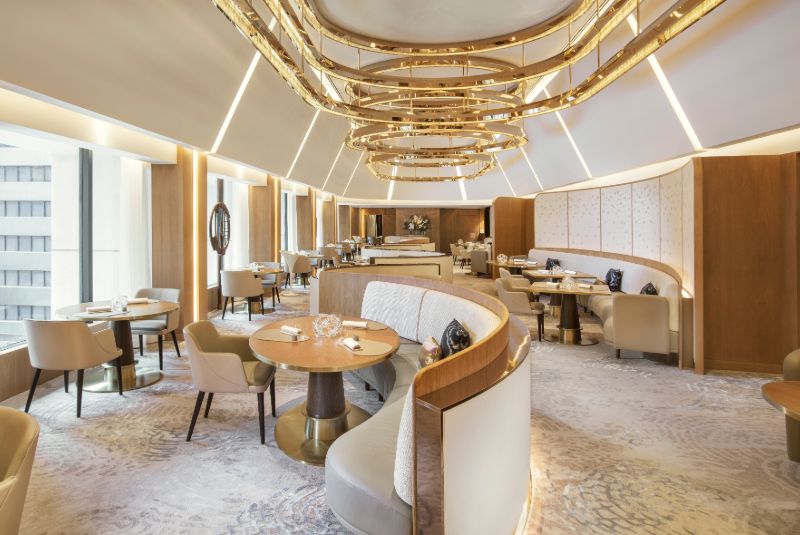
After a four-month closure, Amber reopened in May 2019 with a stunning new dining room featuring undulating curves and a bright new culinary philosophy that favours the essence and truth of each ingredient. The menu caters easily to dietary needs with every dish dairy- and gluten-free and low in salt and sugar.
No.30 Ministry of Crab, Colombo, Sri Lanka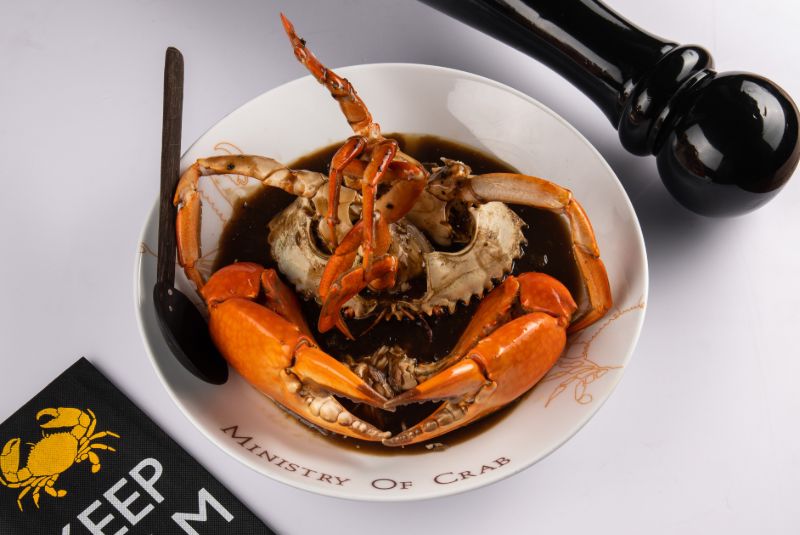
Set in a preserved 400-year-old Dutch Hospital in Colombo with a minimalist but huge open kitchen, Ministry of Crab is a haven for crustacean fans, celebrating the Sri Lankan crab in everything from the food to the crab-claw plants that serve as the restaurant’s only décor. The restaurant was set up by chef-restaurateur Dharshan Munidasa together with Sri Lankan cricket legends Mahela Jayawardena and Kumar Sangakkara.
No.29 Sazenka, Tokyo, Japan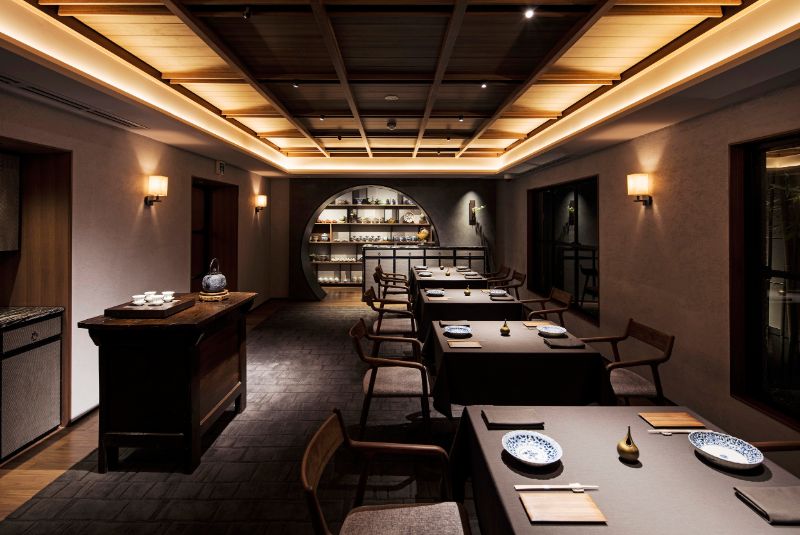
Chef Tomoya Kawada cooks Chinese cuisine infused with a Japanese sensibility, rooted in the two countries’ shared culture of tea drinking. His elegant restaurant, located inside a former diplomat’s residence in Tokyo’s upmarket Minami-Azabu district, has just 12 seats, plus two private rooms.
NEW ENTRY
No.28 Zén, Singapore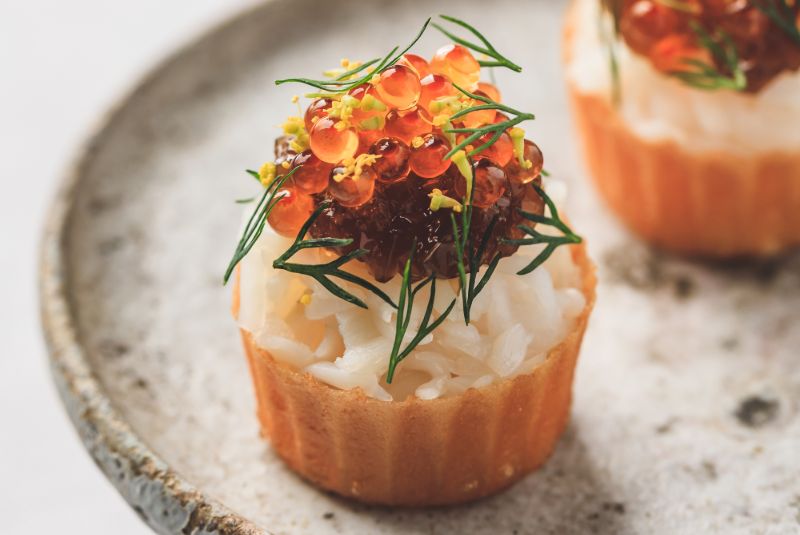
Zén is the Singapore stablemate of the much-vaunted Stockholm restaurant Frantzén – hence the name – which features prominently on The World’s 50 Best Restaurants list. Expect snacks of beer-poached crustacean with trout roe topped with dill-scented sour cream as well as crispy potato roll crowned with Vendace roe, red onion rings and dill, followed by a parade of eight mains headlined by the signature “French Toast”, a grand tradition.
No.27 TocToc, Seoul, South Korea
Despite first moving to Seoul to pursue a career as a musician, Kim Dae-chun ended up in Tokyo’s Cooking Academy, enjoying stints at the likes of L’Embellir in Tokyo and Bono Bono in Seoul after graduating. A fascination with seafood led him to open TocToc in 2013, pioneering French-Asian cuisine while reintroducing forgotten Korean ingredients including varieties of fish species, seaweed and wild greens.
NEW ENTRY
No.26 JL Studio, Taichung, Taiwan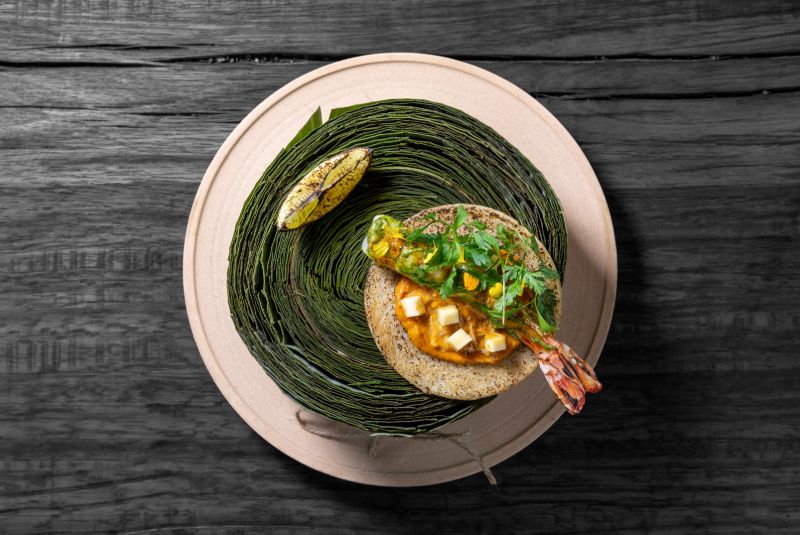
Opened in 2017, JL Studio marries South-East Asian flavours and spices with the best of fresh Taiwanese ingredients. Traditional Singaporean dishes are deconstructed and reinvented in modern form, with fresh flavours, creative presentations and unique twists. In 2019, JL Studio received the Miele One To Watch Award and it debuts on the list this year.
No.25 Seventh Son, Hong Kong, China
A steady stream of elegant Cantonese dishes arrive in an opulent gold-laced setting, celebrating the history of southern Chinese cuisine. The feast will always feature dim sum, seafood-focused small plates and groaning sharing platters.
No.24 Nihonryori RyuGin, Tokyo, Japan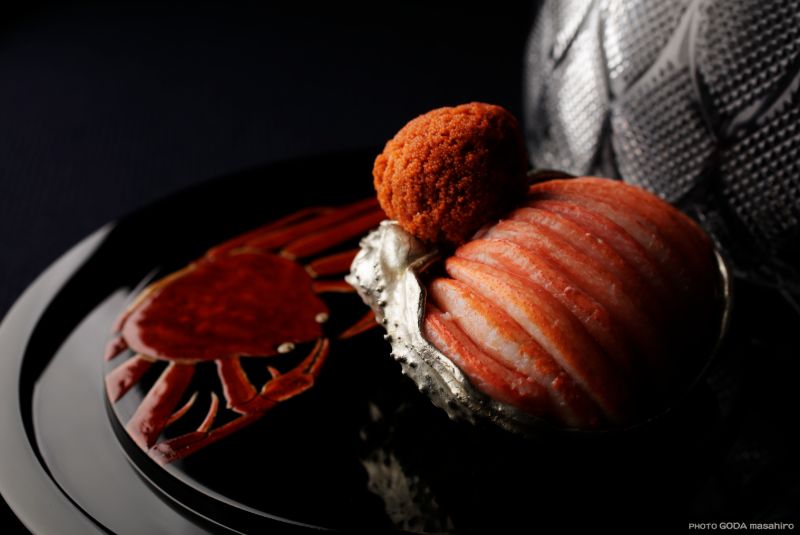
Seiji Yamamoto’s seasonally-driven, 12-course omakase (chef’s choice) tells the story of Japan’s best ingredients at their peak of ripeness. Depending on the season, diners will spin through a menu of ayu (sweetfish) in the summer; matsubagani crabs in the fall; and fugu during the winter.
HIGHEST NEW ENTRY
No.23 Sichuan Moon, Macau, China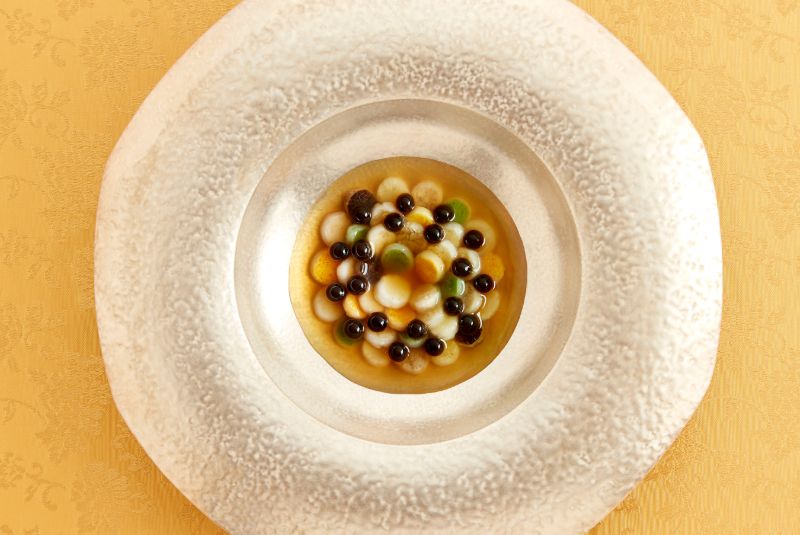
Created by luxury Macau hotel-resort Wynn Palace in conjunction with Taiwan-born, French-trained André Chiang, here you can expect Sichuan’s “mala” (hot and numbing) flavours. You will also be introduced to other members of Sichuan’s famous 24-flavour family including “home-style”, “fish-fragrant”, “hot and sour”, “sour and spicy” as well as “sweet and sour”.
No.22 Wing Lei Palace, Macau, China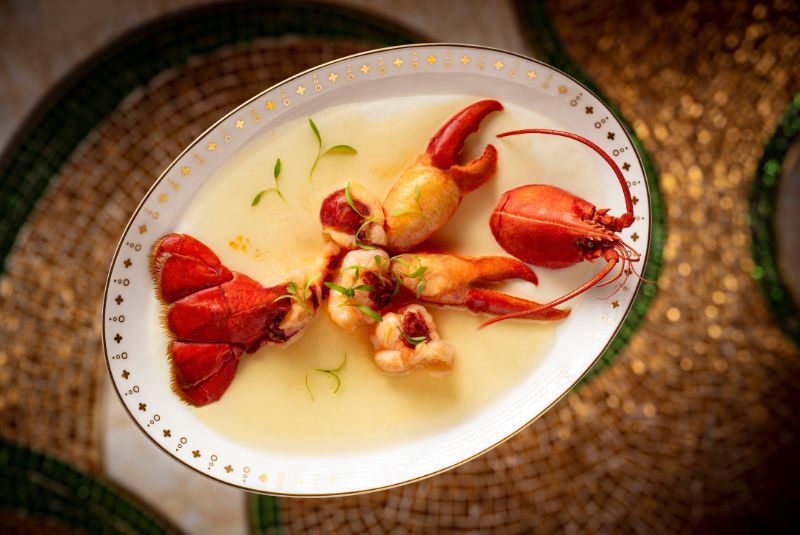
Chef Tam Kwok Fung has long served as one of the world’s leading authorities on refined Cantonese cuisine, earning two Michelin stars for Jade Dragon in Macao’s City of Dreams hotel complex. In 2018, the chef relocated to Wynn’s Wing Lei Palace, finding a luxurious new home for his signature refined, product-focused Chinese cookery.
No.21 Jaan by Kirk Westaway, Singapore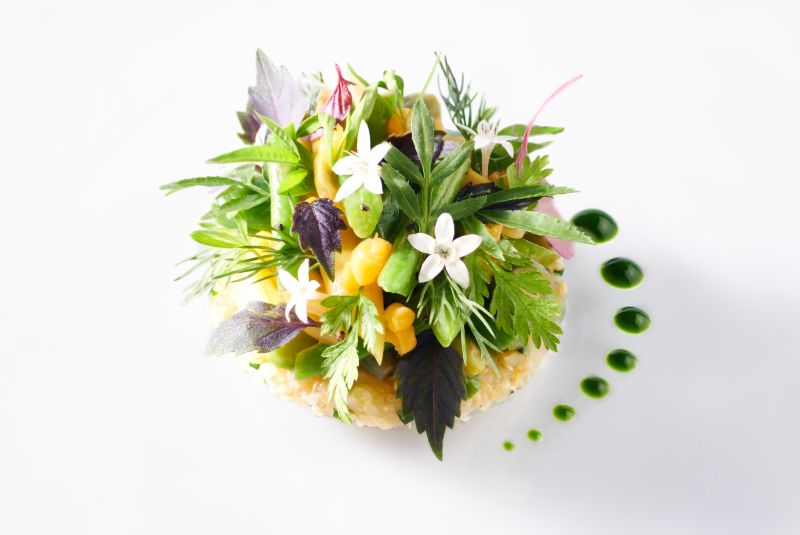
British cook Kirk Westaway took the helm in the kitchen in 2015 and continues to put his own stamp on Jaan. Growing up in near the seaside in the county of Devon, Westaway developed a deep regard and respect for produce, and now adds a modern approach and technique to his dishes, whilst showcasing natural flavours.
No.20 Fu He Hui, Shanghai, China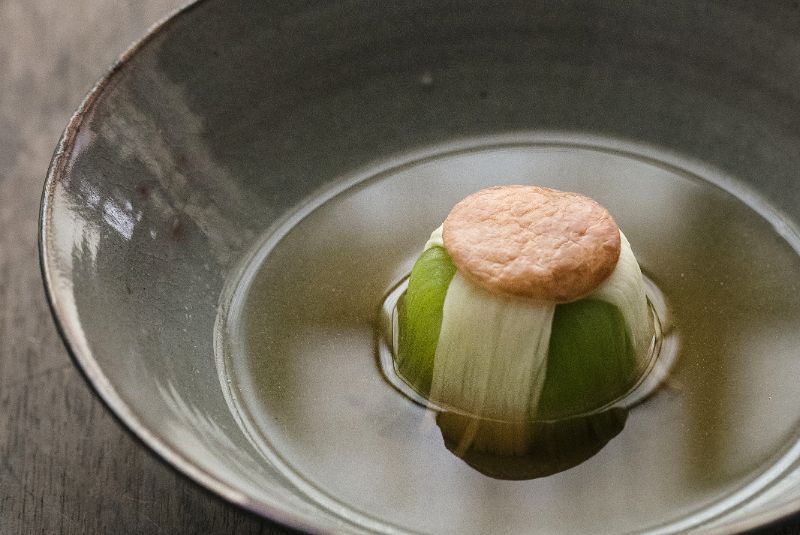
Dinner at this tasting menu-only restaurant is an education in China’s diverse fungi, some of which you are very unlikely to have encountered before. Even carnivores will love the grilled porcini smoked in a jar with a wand of grape vine, served in a shallow pool of mushroom dip strewn with petals of shallot alongside a shot of palate-cleansing fruit vinegar.
No.19 Neighborhood, Hong Kong, China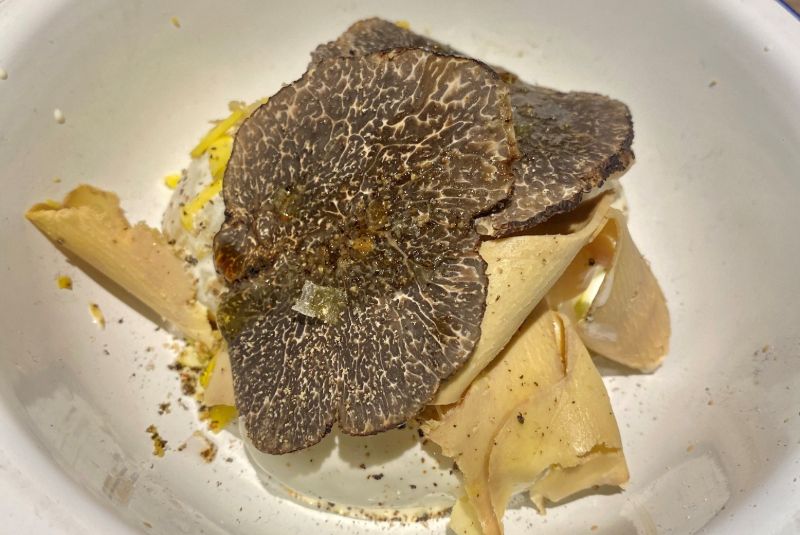
Despite sitting amid the flamboyant antique shops and art galleries of Hollywood Road, Neighborhood is as discreet as they come. Found in a little courtyard, this French-Italian restaurant comes courtesy of restauranteur David Lai and serves food that resonates simplicity and style.
No.18 Mume, Taipei, Taiwan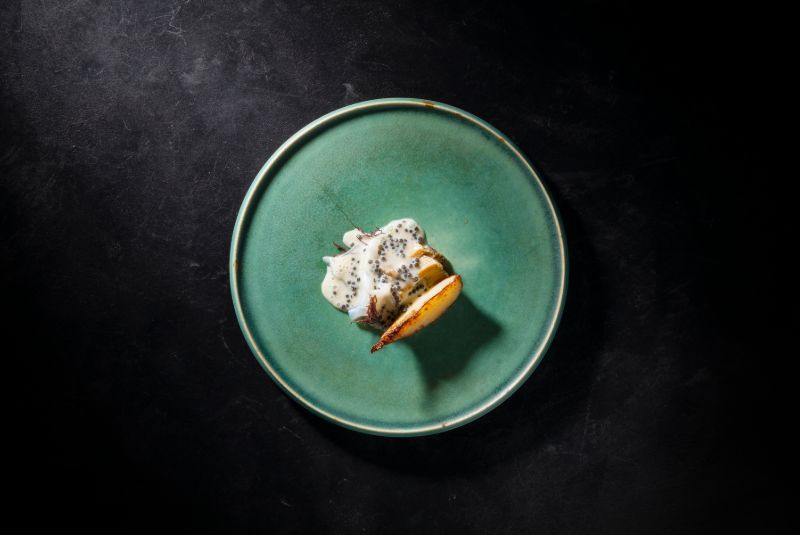
Mume’s philosophy is all about exploring underrated local ingredients and applying modern European techniques to create stunning, colourful dishes such as Taiwanese lobster with chargrilled cucumber and sea herbs.
No.17 Il Ristorante Luca Fantin, Tokyo, Japan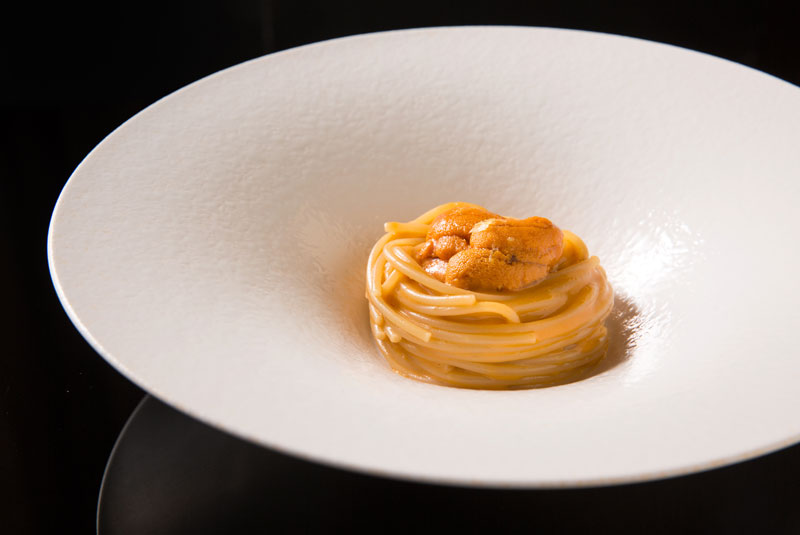
Il Ristorante Luca Fantin is the work of the Italian chef of the same name, who arrived in Tokyo in 2009. Fantin’s creative, contemporary, seasonal cuisine is the highlight of Tokyo's Italian gastronomic scene. The restaurant is as sophisticated as its setting — a soaring 9th-floor dining room overlooking the famous avenue that runs through the heart of Tokyo’s Ginza neighbourhood.
No.16 Sorn, Bangkok, Thailand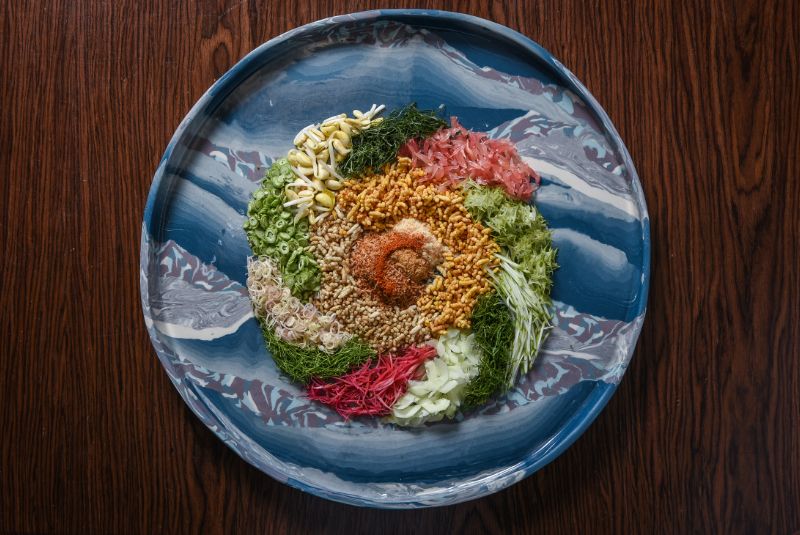
Sorn is, quite possibly, the hottest Thai restaurant to debut in the buzzy Bangkok scene in recent years. Since it opened in September 2018, it has gone on to snag an admirable number of accolades including the Highest Climber Award in this year’s list. Expect southern Thai flavours incorporating tastes of bordering Malaysia but using almost exclusively Thai ingredients, presented with white-glove service in a stately refurbished old house at Sukhumvit Soi 26.
No.15 Gaa, Bangkok, Thailand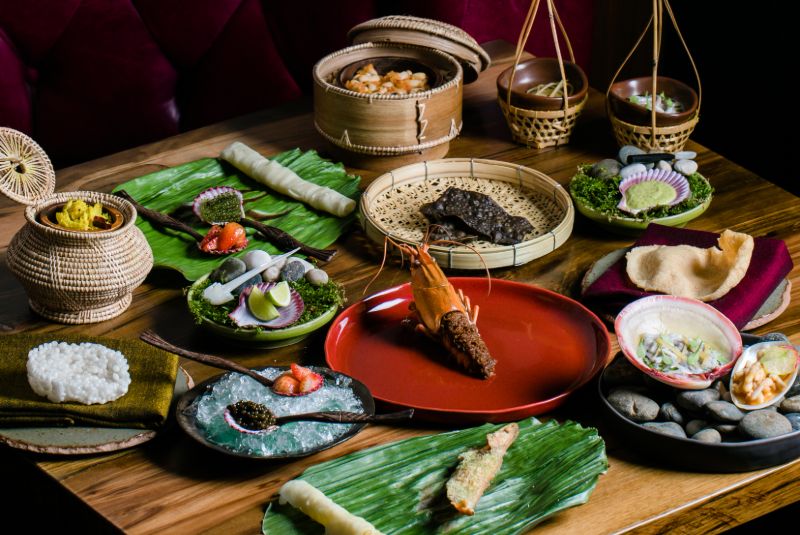
Melding flavours from India and Thailand, chef Garima Arora builds progressive dishes with ingredients dictated by the seasons. Guests sign up for a 10- or 14-course tasting menu, which can be accompanied by natural wines, fermentation-rich cocktails, or a whole juice pairing. Arora describes her culinary style as “modern eclectic cuisine”.
No.14 Mingles, Seoul, South Korea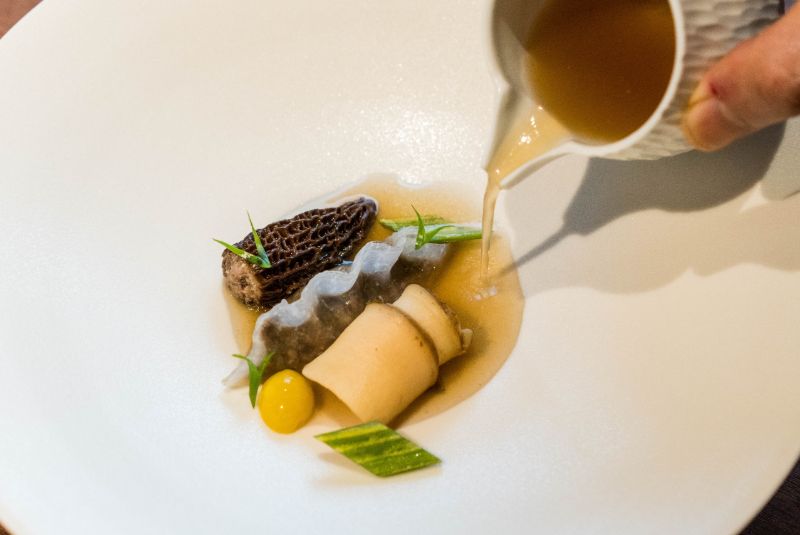
Since its opening in April 2014 in Seoul’s buzzy Cheongdam-dong district, Mingles has been wowing local and international diners with its fusion of eastern and western cuisine. So much so, that the restaurant was the Highest New Entry to Asia’s 50 Best Restaurants 2016 and has now been voted The Best Restaurant in Korea for the fifth consecutive year.
No.13 Indian Accent, New Delhi, India
Now in its sixth consecutive year as The Best Restaurant in India, Indian Accent continues to excel through a combination of creative modern dishes and warm hospitality. Chef Manish Mehrotra’s inventive tasting menus add an international accent to his country’s cuisine by mixing in global ingredients and techniques.
No.12 Vea, Hong Kong, China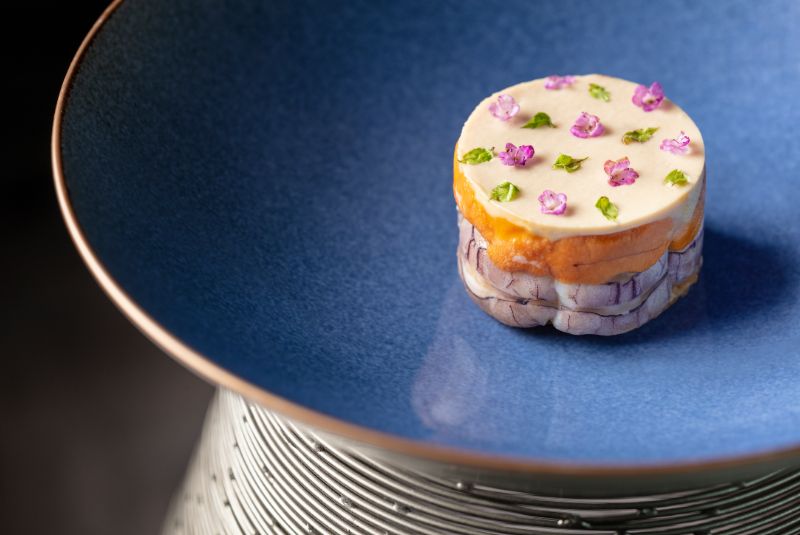
At chef Vicky Cheng's Vea, sea cucumber and fish maw live alongside truffles and caviar, fortifying some of the signature dishes. Specific preparations change seasonally, for example, Cheng might stuff his sea cucumber with a mousse made from local female mud crab. Hong Kong’s king of cocktails Antonio Lai is a partner in Vea and heads up the bar programme, crafting sophisticated, worldly-inspired libations, often decorated with playful garnishes.
No.11 Les Amis, Singapore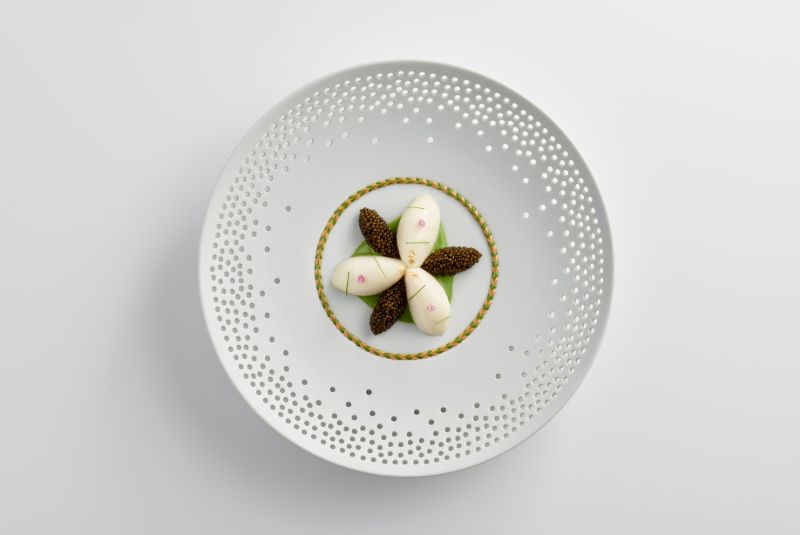
Recognised with the Gin Mare Art of Hospitality Award 2020, Les Amis seeks to coddle diners with the finest white-glove service. Classic Lepinoy dishes include cold angel hair pasta with kombu, caviar and black truffle; line-caught sea bass from Saint Gilles Croix de Vie in France, served with a traditional Americaine sauce; sea urchin soufflé with sauce anisé and kristal caviar; and grilled côte de veau from the Aubrac region with natural veal jus and green asparagus.
No.10 La Cime, Osaka, Japan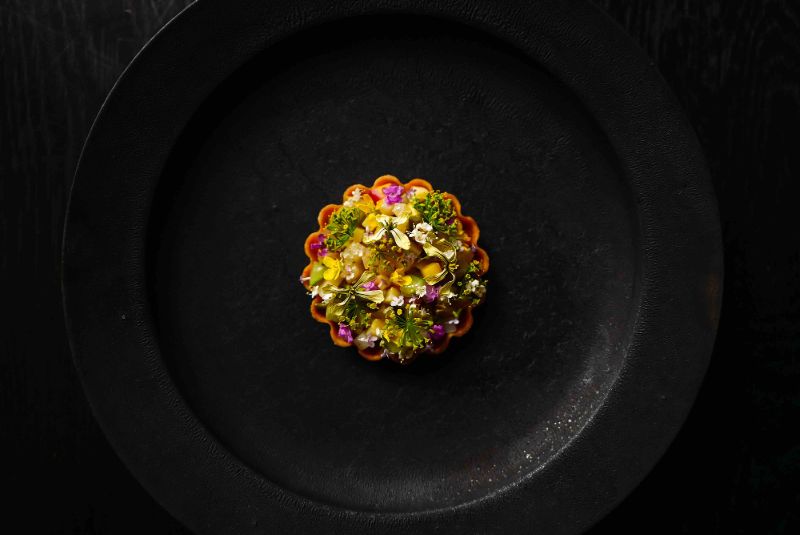
La Cime debuted on the Asia’s 50 Best Restaurants list in 2018, when it appeared at No.17, earning the title of Highest New Entry. Since then, the restaurant has been rising in the list, breaking into the top ten in 2020. Chef Yusuke Takada likes to incorporate ingredients such as citrus from his birthplace, the southern island of Amami Oshima, which lies between Kyushu and Okinawa. He also draws inspiration from the dishes he grew up eating that were cooked by his mother and grandmother.
No.9 Narisawa, Tokyo, Japan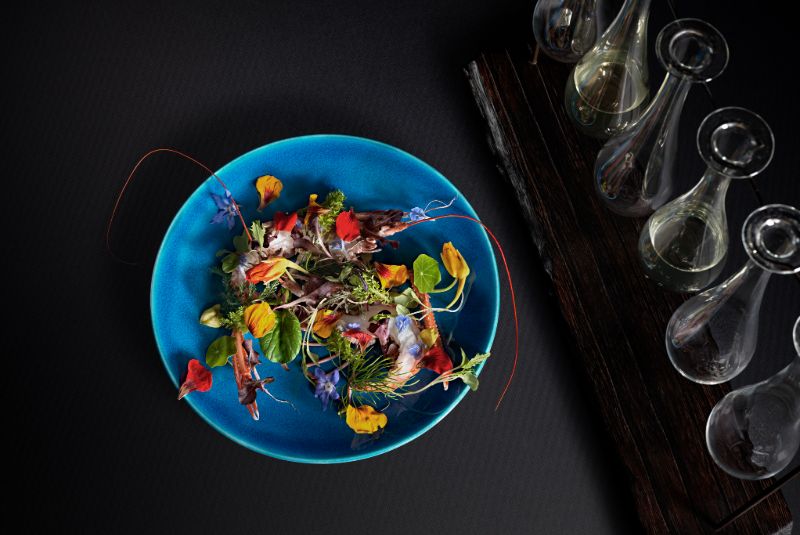
Chef Yoshihiro Narisawa is a pioneer in the world of Japanese cooking, taking a cuisine baked in tradition and applying new techniques learned through experience and years working with top chefs across Europe, South America and Asia. With an acute interest in epicurean ecology, Narisawa approaches his kitchen with the theme of ‘beneficial and sustainable gastronomy’ and a spirit he calls ‘jinen,’ focusing on natural life and the harmony of people and nature.
No.8 Le Du, Bangkok, Thailand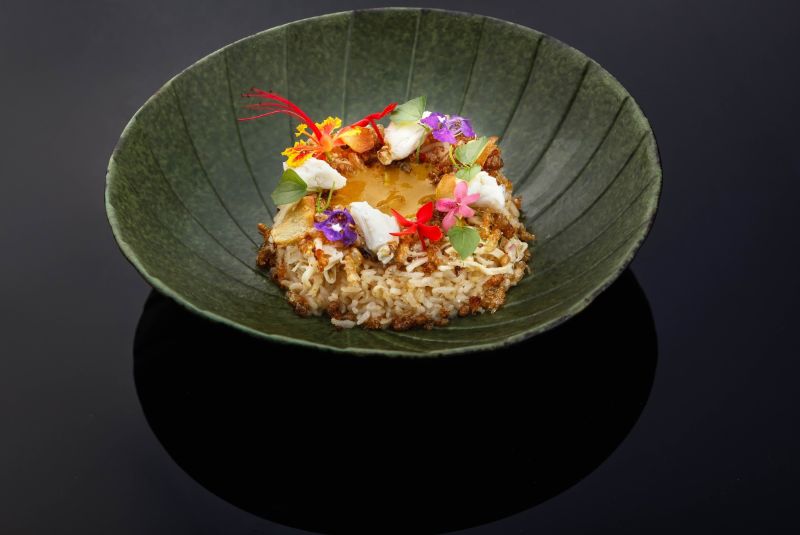
It might sound French, but the name Le Du actually derives from the Thai word for 'season', and seasonal Thai ingredients are the focus here in progressive French-influenced dishes that focus on specific regions of Thailand. There's a delicate balance between sweet, sour and spice in creations such as ‘khao kluk kapi’, which arrives as a shrimp paste-based brown rice risotto served with grilled prawn.
No.7 Florilège, Tokyo, Japan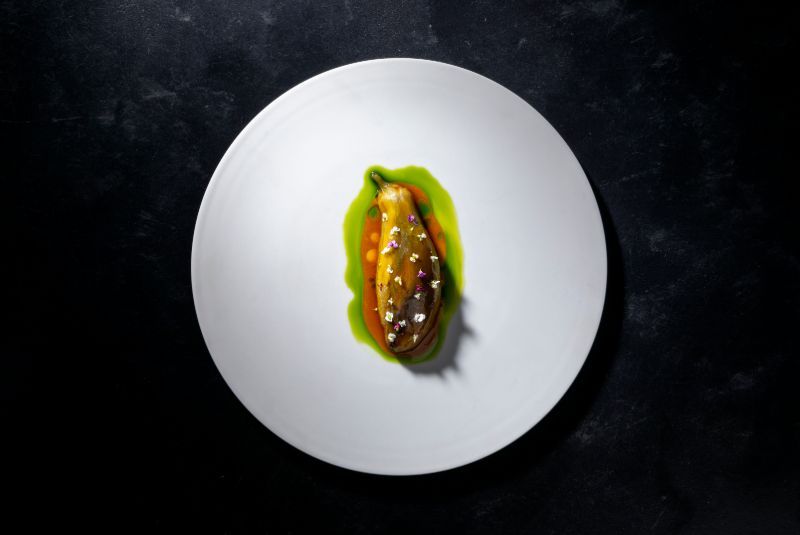
Florilège, meaning anthology in French, is the stage for chef Hiroyasu Kawate’s imaginative modern French cooking. He plays with temperature and texture and isn’t afraid to combine produce sourced from France with Japanese ingredients. Must-try dishes include mackerel and blue cheese, squid and fromage blanc, as well as manjū dumplings stuffed with pigeon and simmered in port wine.
No.6 Sühring, Bangkok, Thailand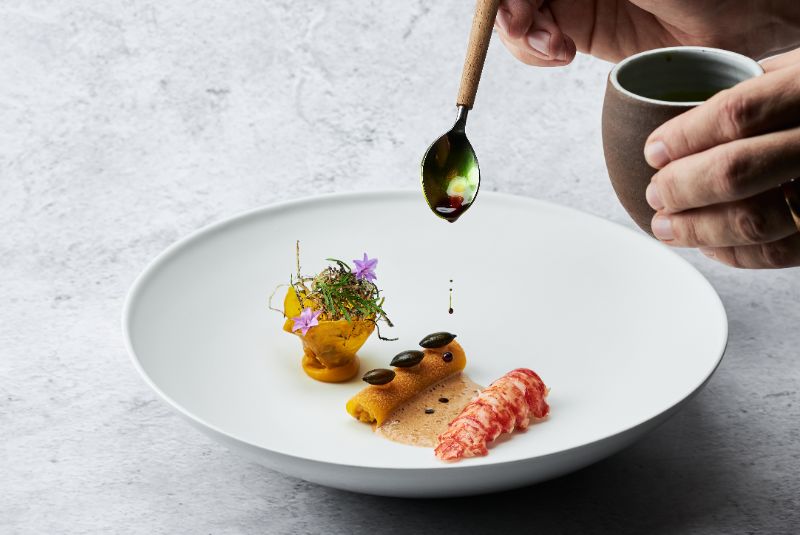
In a city where German food offerings are sparse, the arrival of Sühring's light, contemporary fare in 2016 was immediately welcome. Using seasonal ingredients and a large dose of technical skill, twins Thomas and Mathias Sühring offer tasting menus of seasonal dishes inspired by their home country.
No.5 Burnt Ends, Singapore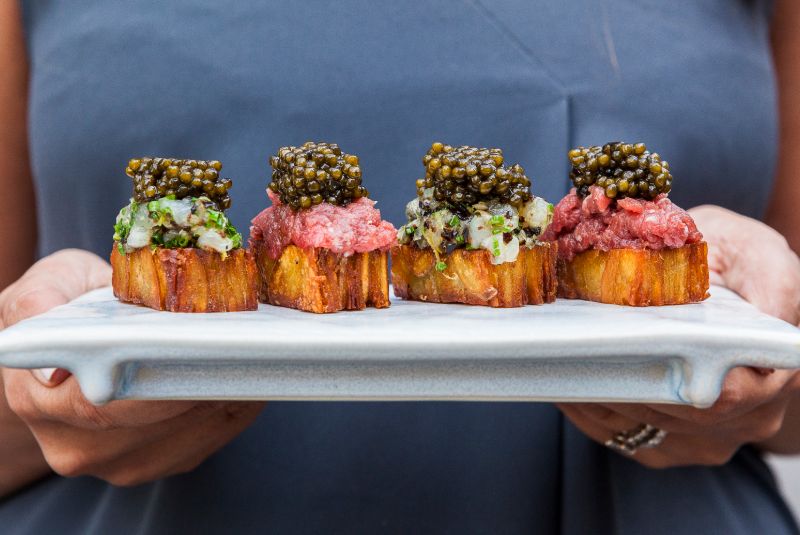
A four-tonne, two-oven brick kiln designed by chef-owner Dave Pynt, who won the Chefs' Choice Award in 2017, dominates Burnt Ends' busy open kitchen. Almost everything here – from quail eggs to an 80-day dry aged rib – is touched by the kiln's heat and smoke, or by the custom grills: the restaurant’s heart and soul.
No.4 Belon, Hong Kong, China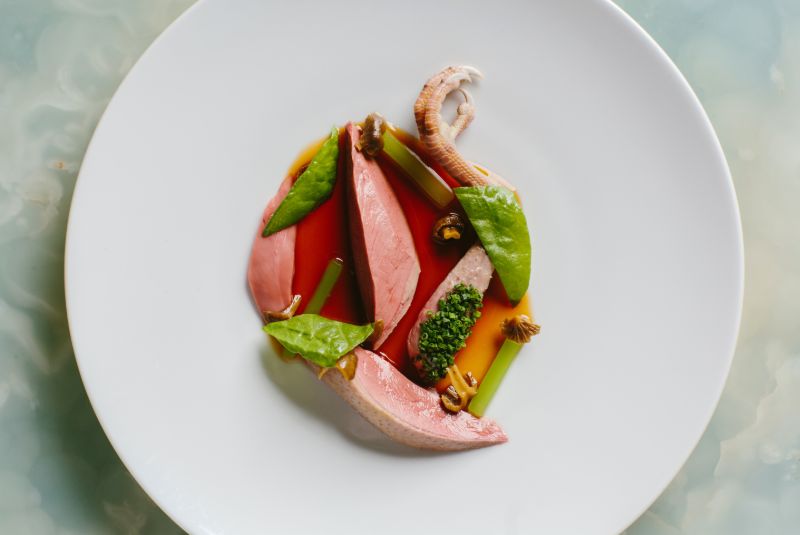
Named after the bulbous European oyster traditionally found in Brittany, Belon mixes the vibrancy of the Hong Kong strip with a bustling Parisian bistro in the Soho district. Using an array of fine local ingredients, Belon showcases pared-back technique, with former Per Se and Epicure chef Daniel Calvert at the helm.
No.3 Den, Tokyo, Japan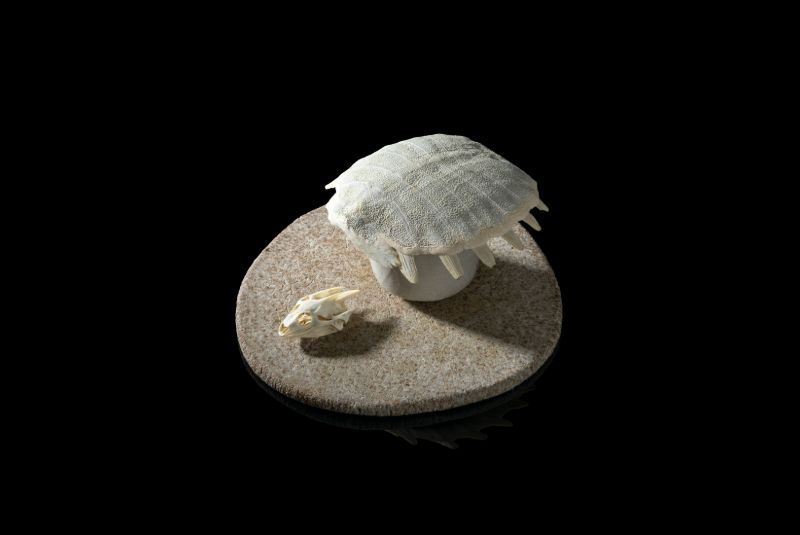
Chef Zaiyu Hasegawa and his team have an unparalleled ability to ensure that every diner leaves with a smile. Playful presentation is supported with technically savvy skills to create modern kaiseki, the style of Japanese cuisine involving a series of small, intricate dishes. A combination of impeccable food and superlative hospitality has earned Den the title of Best Restaurant in Japan for the last three years, after making its debut on the list in 2016.
No.2 The Chairman, Hong Kong, China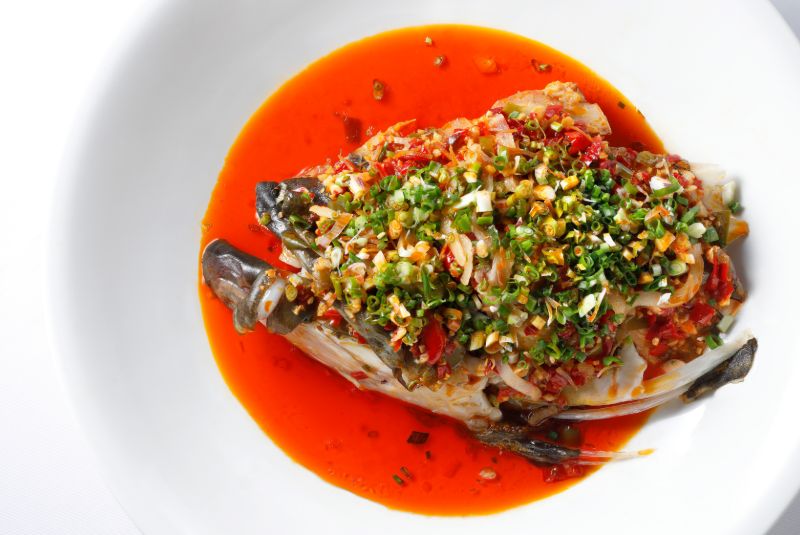
While Chinese cookery is often wed to longstanding recipes from the past, The Chairman follows an original ingredient-driven – and concept-inspired – path. Traditional skills shape carefully sourced seasonal ingredients, but ultimately yield wholly new contemporary Cantonese dishes. The perennial favourite is Chef Kwok Keung Tung’s steamed flowery crab in aged Shaoxing wine and chicken oil with flat rice noodles.
No.1 Odette, Singapore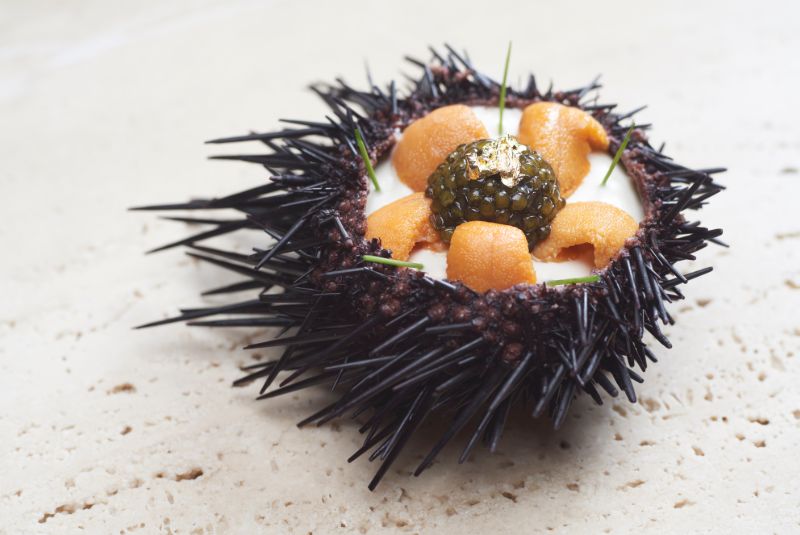
For the second year in a row, Odette takes home the double trophies for The Best Restaurant in Singapore and The Best Restaurant in Asia. Beyond signature dishes like Normandy brown crab with wasabi oil and Nashi pear, and Kampot pepper-crusted pigeon, find chef Julien Royer’s elegant touch – which reflects his French background yet Asian environs – in plates of miso-glazed endive, and spot prawn tartare capped with a mussel-imbued cream and caviar. Located in the historic National Gallery Singapore, thanks to soft pops of pink, against a cream and grey backdrop, Odette’s dining room conveys a feminine feel infrequently found in top-end establishments.
Now recap the whole list in the video:
Follow Asia's 50 Best Restaurants on Facebook, Instagram, Twitter and YouTube for the latest news, features and videos.

